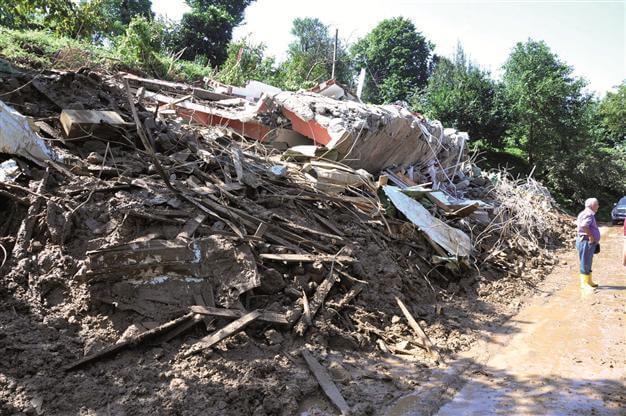Catastrophic flood sparks debate on environmental misconduct in northern Turkey
Erdinç Çelikkan – ANKARA

DHA photo
With the Black Sea province of Artvin suffering floods after disastrous rain and landslides that killed eight people, experts believe the many hydroelectric power plants being constructed in the area and clogged culverts triggered the deadly phenomenon.
Disregarding the fragile geology and landslide risk of Turkey’s northern Black Sea region, riverbed directions were changed for hydroelectric power plant constructions, said Mert Güvenç, the head of the Chamber of Environmental Engineers, a sub-organization of the Union of Chambers of Turkish Engineers and Architects (TMMOB).
“The catastrophe was triggered by riverbeds whose directions were changed in order to construct hydroelectric power plants and regulators placed to transfer more water to the plants. The Black Sea region has already been dangerous in regard to landslides. Necessary measures have not been taken. This disaster is manmade,” Güvenç told daily Hürriyet.
A true natural disaster has been produced by misapplication of Environmental Impact Assessment (ÇED) procedures for the hydroelectric power plants, Güvenç said, referring to the fact that according to Turkish law all construction projects require a ÇED report to start construction.
The Prime Ministry Disaster and Management Authority (AFAD) said in a written statement that eight people were dead, one missing, and 19 injured after floods and landslides occurred after heavy rain in Artvin’s Hopa district on Aug. 24, the state-run Anadolu Agency reported on Aug. 25. Additional forces were dispatched to Artvin for search and rescue work as warnings were issued against further rainfall.
Recalling that a warning was issued against heavy rain on Aug. 23 in Artvin, the Forestry and Water Works Minister Veysel Eroğlu said such heavy rainfall had only been seen in Hopa once in 500 years.
The Prime Ministry has provided 10 million Turkish Liras in aid for urgent needs in the region and the Waterworks Ministry is set to spend 100 million liras in renovating the riverbeds, bridges and culverts that were all damaged in the catastrophe.
The disaster has sparked a renewed debate among environmental organizations on whether the construction of hyrdoelectric power plants, as well as many other construction projects in the Black Sea region, are properly done.
Environmental Issues Research Center Head Baran Bozoğlu noted that hydroelectric power plants in the Black Sea region are usually constructed without taking into consideration ground and underground water.
“Underground water conditions and the earth’s capacity to absorb water and rain should be taken into account,” Bozoğlu said, adding that constructing hydroelectric power plants in a way that changes the riverbed direction made the earth less capable of absorbing water.
Justice and Development Party (AKP) Artvin deputy İsrafil Kışla claimed that the disaster was caused by the culverts clogged by debris that was swept by flood water.
“Heavy rain fell in the region. There were deaths because of landslides and flood water coming from highlands. The biggest problem is with culverts. Stones and rocks had swept into floodwater-clogged culverts,” Kışla said.
The floods paralyzed daily life across the remote northeastern town of Artvin and its districts of Arhavi, Hopa and Borça. The main road linking the three districts was also blocked off because of floods, while reports said a large number of vehicles were stuck in flood water.
